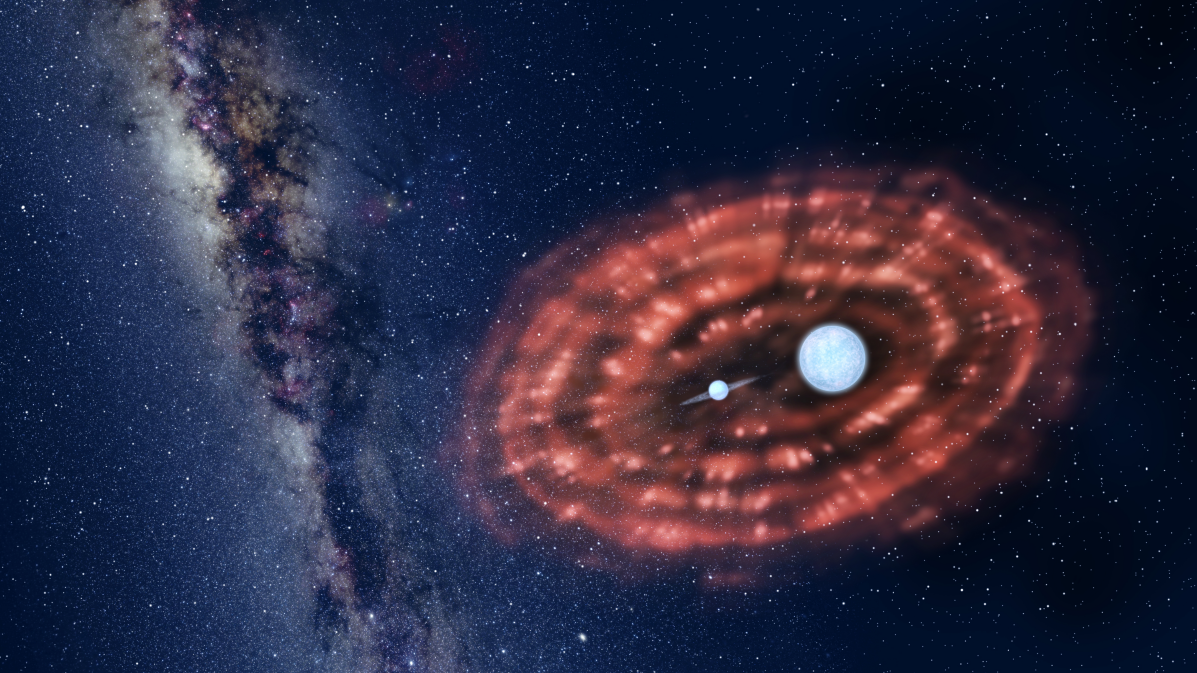
A team of astronomers led by Prof. HAN Zhanwen from the Yunnan Observatories (YAO) of the Chinese Academy of Sciences and Prof. Chris Wolf from Australian National University has jointly discovered a binary system ejecting a common envelope at a speed of about 200 kilometers per second.
This is the first time scientists have observed direct evidence of common envelope evolution, which is a key process of binary star evolution. This important discovery provides a way to accurately characterize the common envelope evolution of binary stars through observation.
The study was published in Monthly Notices of the Royal Astronomical Society on July 7.
Most of the luminous objects in the Universe are stars. More than half of all stars are found to be in binary systems. Two stars in a binary system orbit around each other due to their gravitational attraction.
Binary evolution plays an important role in determining the fate of stellar objects. It has been widely used as the explanation for most mysteries in astronomy and astrophysics such as the formation of exotic stellar objects including Type Ia supernovae, double black holes, and double neutron stars, etc.
Common envelope evolution is one of the key processes of binary evolution. In this process, the donor star of a binary system expands dramatically due to the mass loss, thus leading to the two stars spiraling towards each other and formation of a common envelope. This process determines the subsequent evolution of the binary system. A binary system with a shorter orbital period would be expected to form if the common envelope is ejected successfully. Otherwise, the two stars within the common envelope would merge into a single object.
Common envelopes were first postulated by B. Paczynski in 1976. However, a common envelope had never been seen before now. As a consequence, scientists were quite unclear what exactly happens during the common envelope phase of binary star evolution.
Based on the observations from the Australian National University's 2.3-meter wide-field telescope and the Kepler telescope, Chinese and Australian scientists have jointly found a binary system consisting of a hot subdwarf and a white dwarf, named J 1920. In this binary system, the two stars orbit around each other with an orbital period of about 3.5 hours, and are getting closer and closer.
In addition, scientists have seen that this binary system is surrounded by an expanding shell moving at a speed of about 200 kilometers per second. This expanding shell is further confirmed to be a common envelope that was ejected from the binary system about 10,000 years ago. Continuous orbital contraction observed in the J 1920 binary system indicates that friction caused by the orbital motion of the two stars in the envelope can severely dissipate orbital angular momentum. This is a new mechanism for angular momentum loss in addition to the mechanisms of magnetic breaking and gravitational radiation.
The significance of this important discovery is that it turns a theoretical idea into reality. Scientists have not only seen the first evidence of common envelope evolution, but have also been able to accurately characterize the common envelope evolution of binary stars through observation.

Fig. 1 Artist's impression of the common-envelope evolution in a binary system J 1920. (Image by YU Jingchuan)

Fig. 2 An illustration of common envelope evolution in binary star evolution. (Image by YAO)

86-10-68597521 (day)
86-10-68597289 (night)

86-10-68511095 (day)
86-10-68512458 (night)

cas_en@cas.cn

52 Sanlihe Rd., Xicheng District,
Beijing, China (100864)

